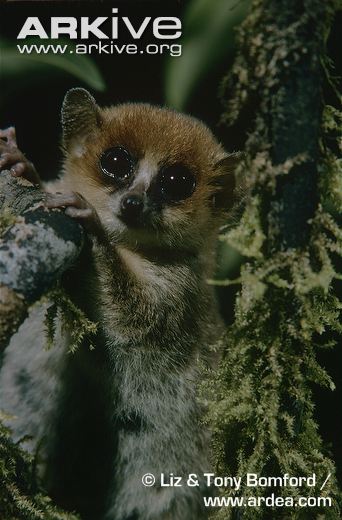Habitat
Microcebus murinus live specifically within Madagascar, a
large island about 250 miles from the African mainland (The
Africa Guide 2014).
Microcebus murinus are one of many arboreal primate species.
Microcebus murinus are highly adapted to the arboreal lifestyle.
Trees are adequate sources of protection from predators and extreme temperatures.
Microcebus murinus inhabit a variety of
habitat types including tropical, scrub, and deciduous forests
(Lahann 2008).
Although Microcebus murinus spend much of their life in the high
tree branches, they come closer to ground level to search for
food. To move to different trees, Microcebus murinus leap from
the limbs of one tree to the limbs of another tree. You can read
more about adaptations to climate in form and
function (Animal
Diversity Web 2014).
are adequate sources of protection from predators and extreme temperatures.
Microcebus murinus inhabit a variety of
habitat types including tropical, scrub, and deciduous forests
(Lahann 2008).
Although Microcebus murinus spend much of their life in the high
tree branches, they come closer to ground level to search for
food. To move to different trees, Microcebus murinus leap from
the limbs of one tree to the limbs of another tree. You can read
more about adaptations to climate in form and
function (Animal
Diversity Web 2014).

Microcebus murinus nest in tree holes. This species is
selective about their nest sites because small mammals in the
forests of Madagascar are under high predation. Microcebus
murinus utilize tree holes for adequate protection by
keeping themselves hidden. This is a contrast from related
lemurs (such as Microcebus ravelobensis) that use less
protective shelters and rely on their ability to flee in order
to avoid predation. Another factor that affects which tree hole
the Microcebus murinus chooses is thermoregulation (Radespiel, et al.
2003).
Microcebus murinus have adapted to share nests under specific
circumstances. There
 are
also intraspecific differences by sex when it comes to nesting
choices. Males tend to sleep alone in their nests and most
females sleep in groups. Occasionally, females can even be found
nesting with the females of related species. Males also tend to
frequently change their nesting site, while females will often
return to the same nesting site (Radespiel, et al. 2003).
are
also intraspecific differences by sex when it comes to nesting
choices. Males tend to sleep alone in their nests and most
females sleep in groups. Occasionally, females can even be found
nesting with the females of related species. Males also tend to
frequently change their nesting site, while females will often
return to the same nesting site (Radespiel, et al. 2003).
Wanna know more? Click here!
Or click here to go back to the Home page.